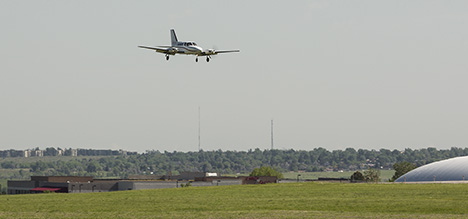
May 17, 2017
What’s the safest way to calculate runway landing distance while reflecting real-world pilot and airplane performance? It depends on whether you are a Part 91, a Part 135 operator or a Part 135 “eligible on-demand operator.”
For Part 135 operators, landing distance is strictly limited by regulation. A typical Part 135 operator must plan to land on a maximum of 60 percent of the most likely runway, which means the weather, available approach and runway conditions at the time of departure must reasonably be expected so that the aircraft will come to a full stop within 60 percent of the available runway.
“Eligible on-demand” operators – those issued authorization by operations specifications, meeting certain crew experience and pairing requirements, and conducting a destination airport analysis – may extend the maximum landing distance to 80 percent of the useable runway.
For individual operators, the effort to establish best practices regarding landing distance begins with understanding how the manufacturer determines landing distances published in the airplane flight manual (AFM).
Most Part 25 airplanes, which includes typical business turbojets, use the parametric method. This calculation method uses rather extreme landing factors, including a 3.5-degree descent angle and minimum flare. Part 25 certification landing-distance calculations also assume standard-day temperature, maximum braking by the pilot and sea-level elevation (pressure altitude), as well as zero runway slope. A pilot would not likely fly the airplane this way in normal passenger operations.
However, not all aircraft manufacturers use this method of determining landing distance, and not all aircraft models from the same manufacturers necessarily use the same method.
In other words, the landing distances provided in AFMs assume a number of factors unlikely to co-exist in normal operations, and pilots must understand how the manufacturer calculates the landing distance for their specific aircraft. Additional, real-life safety buffers or safety margins help account for actual pilot performance and everyday flight.
“Pilots flying aircraft for certification purposes are testing the maximum performance of that aircraft and utilize every system to its design specification,” said Doug Carr, NBAA’s vice president of regulatory and international affairs. “Part 91 operators should consider the value of company-specified landing-distance additives or safety margins used in other types of operations to establish best practices that take into account varying runway conditions for their own organizations.”
The Takeoff and Landing Performance Assessment (TALPA) Aviation Rulemaking Committee developed a new methodology for conveying actual runway conditions, designing the Runway Condition Assessment Matrix (RCAM) to standardize the format of stated contaminant types and depths.
“NBAA encourages operators and pilots to become familiar with the Runway Condition Assessment Matrix and use the updated terminology to report runway conditions,” said Carr. “Understanding how runway distances are calculated and using the RCAM can help operators determine the most accurate landing distance for your aircraft and operations.”
The RCAM methodology of reporting runway conditions was effective Oct. 1, 2016, and used during the past winter season.
Review the RCAM (PDF)


 International Business Aviation Council Ltd.
International Business Aviation Council Ltd.